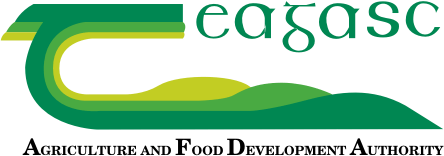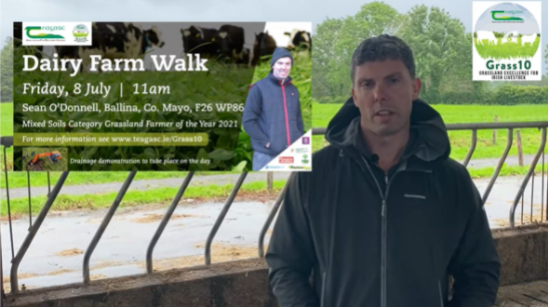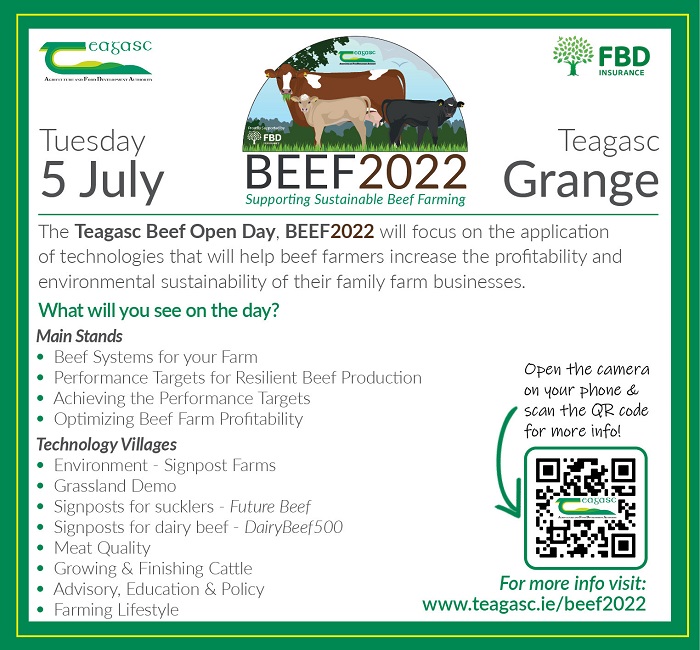29 June 2022
Grass10 Newsletter – 28th June 2022
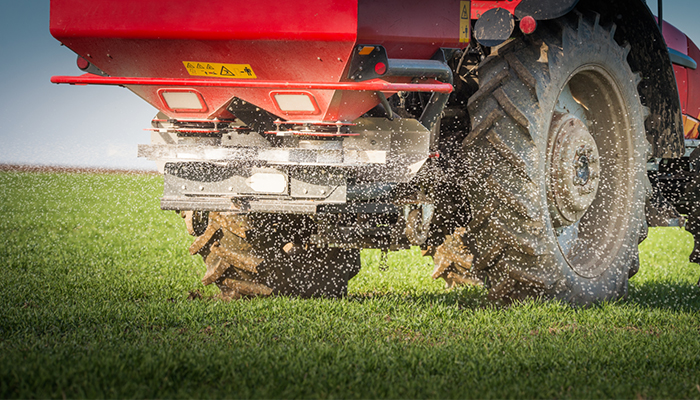
Rainfall brings opportunity (growth) and challenge (grazing conditions). In this week’s newsletter the Grass10 team promote the 2021 GFOY Winner Farm Walk on Friday, 8th July on Sean O’Donnell’s farm in Mayo. Get details of Beef 2022 at Grange, featured farmer, clover reporter, advice and more here
202nd Edition – 28th June 2022
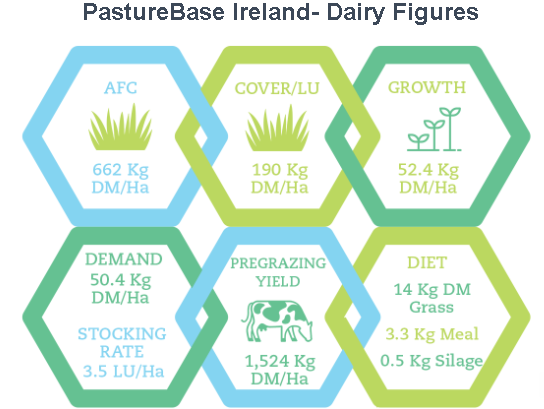
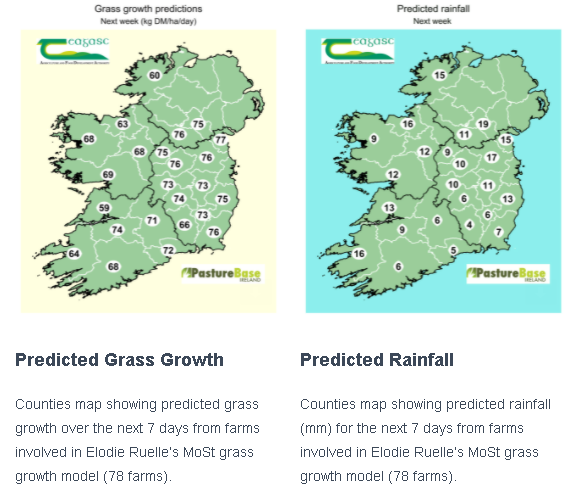
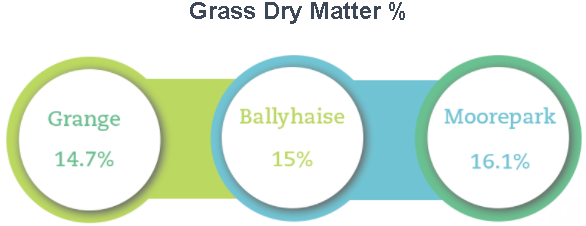
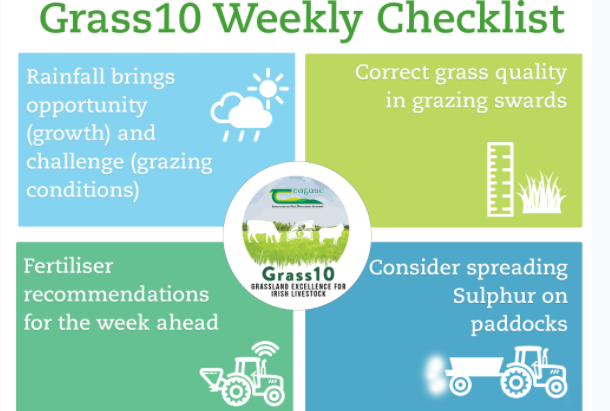
Grass10 Weekly Tips
Rainfall brings opportunity (growth) and challenge (grazing conditions)
Grass growth is expected to increase in most parts of the country now that rain has arrived. Northern parts and some heavy land areas may have a different challenge as ground conditions deteriorate –a flexible approach to grazing will be required – strip grazing, on/off grazing etc. Grass growth is now going to be ahead of demand on both dairy and drystock farms on average across the country. Demand needs to increase on farms in line with grass growth through higher stocking rate and lower supplementation. This is the right thing to do as soil moisture deficits are going to improve and growth continues to increase. Don’t let pre-grazing yield go above 1300-1500 Kg/Ha. There will be a greater quality challenge if this happens. Where silage is being fed, this should be targeted to be removed from the diet first followed by reduced meal feeding. Continue to walk the farm and match demand to the growth, i.e. growth 65 KgDM/ha per day with stocking rate 3.6 LU/ha means 18 KgDM grass can be fed per LU
Correct grass quality in grazing swards
Early June has brought with it lower rainfall levels and reduced growth rates which has led to poorer grass quality. Many paddocks are gone stemmy in nature. Some paddocks will return stemmy (even though rainfall has arrived) as the plant has already made the decision to turn reproductive before rain arrived. Also, some paddocks which weren’t grazed out to 4cm during this period have now become stemmy. Grass quality is poorer in these paddocks even at the ideal pregrazing yield (~1400 KgDM/ha). The first priority must be to remove paddocks with the poorest grass quality as high quality silage if there is surplus grass on the farm (i.e. cover/cow is >160-180 KgDM/LU, or more than 12-14 days ahead on drystock farms). Where there is no surplus in grass supply, the options are; bale-out 1-2 paddocks in the next rotation or top 1-2 paddocks after grazing. It is important to try to correct as many paddocks as possible over the next month as autumn build-up of grass will begin in August. However, carrying out too much mowing/cutting together and a deficit may form in the grass wedge.
Fertiliser recommendations for the week ahead
Some much needed (in most parts) rainfall has arrived. Additional Nitrogen will be released from the soil now that this rain has arrived. N release from the soil will be stimulated by moisture arriving. This must be considered when making a decision on fertiliser/slurry application. Within the farm, there will be a huge variation in growth as a result of moisture stress. Some paddocks will not need as much N, some paddocks will respond well to application, while other paddocks will need to be grazed off before an adequate response will be achieved. When paddocks are stressed applying a compound fertiliser helps or apply watery slurry to paddocks. This will apply some much needed N, P and K. Walking the farm and assessing grass growth and vigour of the sward on every paddock will determine nutrient application. Clover swards will supply their own N. Some opportunity has now arrived to apply a little below the normal rate of 15-20u N/acre
Consider spreading Sulphur on paddocks
Sulphur is important to improve nitrogen use efficiency and therefore, growing more grass. During dry weather sulphur availability to the grass plant becomes even more important. While most farms have some Sulphur applied (from slurry and fertiliser), from communication with farmers the amount applied is lower on some farms and a lower number have little applied. Farmers should ideally apply a high-sulphur based fertiliser to grass as soon as possible as it is coming close to the end of getting a response to application.
Grass10 Featured Farmer
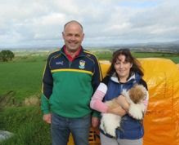 Mike Bermingham, Co. Cork
Mike Bermingham, Co. Cork
Mike and Tina Bermingham milk 108 cows outside Fermoy in Co. Cork. They are on a north-facing farm between 500-600ft above sea level. The farm grows about 14 T DM/ha each year and in 2019 they won the Dairy Grassland Farmer of the Year competition. Read more below.
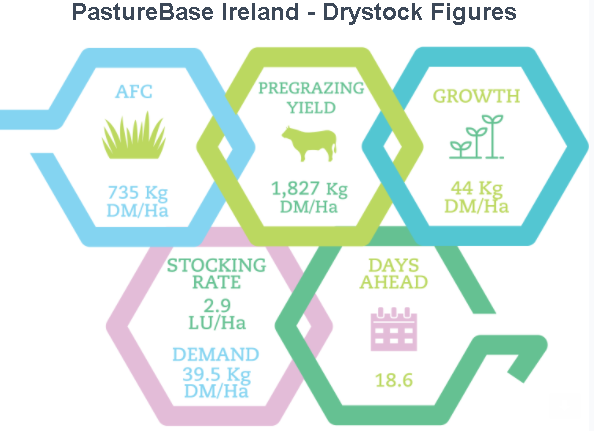
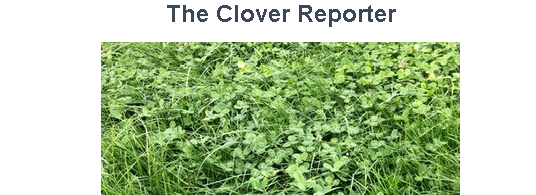
Lawrence Sexton, Co. Cork
 This section will give weekly reports and videos from farmers who have a lot of clover established on their farms.
This section will give weekly reports and videos from farmers who have a lot of clover established on their farms.
This week, dairy farmer Lawrence Sexton give us an update of how he is managing his grass-clover swards during challenging conditions of grass supply.
Launch of 2021 GFOY Winner Farm Walks
Sean O’Donnell and his family farm just outside Ballina, Co. Mayo milking 215 crossbred cows across two milking platforms. The O’Donnell’s were the “Mixed Soils” category winners of the 2021 Grassland Farmer of the Year Competition. Join us on Friday, 8th July at 11am for a farm walk on the O’Donnell’s home farm near Ballina, Co. Mayo, F26 WP86. The event will focus on farm overview and herd performance, grassland management, incorporating & managing grass-clover swards, and there will be drainage demonstration on the day!
Click here to watch the promo video
Sign up for weekly grass 10 newsletter
